Introduction
Owning a car is a commitment to preserving its aesthetics, functionality, and value. While regular maintenance like oil changes and tire rotations are critical, car detailing plays an equally vital role in safeguarding your vehicle from environmental damage, wear, and aging. The right products can transform your DIY efforts into professional-grade care, ensuring your car looks pristine year after year. Below, we break down the five essential detailing products every owner should have in their arsenal, with practical advice on how to use them effectively—no brand names, just pure expertise.
1. pH-Balanced Car Wash Soap
Why It’s Essential
Not all soaps are created equal. Household dish soaps, for instance, are designed to strip grease but can damage your car’s protective wax or ceramic coatings. A pH-balanced car wash soap is formulated specifically for automotive surfaces. It cleans thoroughly without degrading finishes, while its lubricating properties minimize micro-scratches during washing.
Key Features to Look For:
- Gentle pH Levels: Neutral or slightly acidic formulas that won’t harm paint or coatings.
- High Suds Formula: Generous suds lift dirt away without abrasive scrubbing.
- Eco-Friendly Options: Biodegradable ingredients that are safe for the environment.
How to Use It:
- Pre-Rinse: Spray the car with water to loosen surface debris.
- Two-Bucket Method: Fill one bucket with soapy water and another with clean water for rinsing your wash mitt. This prevents dirt from being reintroduced to the paint.
- Work Top to Bottom: Start at the roof and move downward, as lower panels are typically dirtiest.
- Rinse Thoroughly: Use a hose or pressure washer to ensure no soap residue remains.
Pro Tip:
Pair your soap with a high-quality microfiber wash mitt. Its soft, plush fibers trap dirt particles, reducing the risk of swirl marks.

2. Wheel and Tire Cleaner
Why It’s Essential
Wheels and tires endure harsh conditions—brake dust, road salt, and grease can corrode finishes and shorten their lifespan. A dedicated wheel cleaner dissolves stubborn grime without damaging delicate alloy, chrome, or painted surfaces.
Key Features to Look For:
- Non-Acidic Formula: Acid-free cleaners are safer for all wheel types and won’t degrade protective sealants.
- Iron Particle Dissolvers: Effective formulas break down iron-rich brake dust, a common cause of pitting and discoloration.
- Foaming Action: Clings to vertical surfaces for thorough cleaning.
How to Use It:
- Cool Wheels Only: Apply to wheels that haven’t been recently driven to avoid quick drying.
- Spray Liberally: Cover the entire wheel face, barrel, and tire sidewalls.
- Agitate with Brushes: Use a soft-bristled brush for spokes and a stiffer brush for tires.
- Rinse Completely: Residual cleaner can leave streaks or damage finishes over time.
Pro Tip:
For tires, follow up with a separate tire dressing to restore a deep, rich black finish and protect against UV cracking.
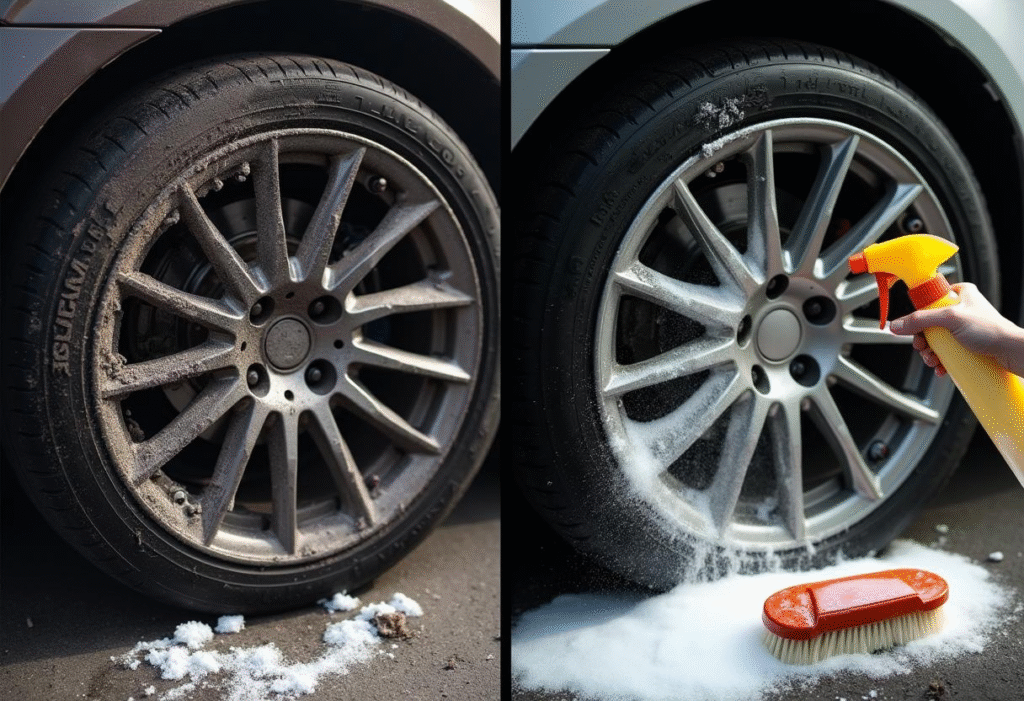
3. Detailing Clay Bar
Why It’s Essential
Even after washing, contaminants like industrial fallout, tree sap, and road tar can bond to your paint, creating a rough texture. A detailing clay bar mechanically removes these particles, leaving surfaces glass-smooth. This step is critical before applying wax or sealants for maximum adhesion.
Key Features to Look For:
- Fine to Medium Grade: Suitable for most paint types without marring.
- Lubricant Spray: A detailing spray or quick wax helps the clay glide effortlessly.
- Plastic Storage Case: Prevents contamination when not in use.
How to Use It:
- Wash and Dry: Start with a freshly cleaned car.
- Lubricate the Surface: Mist a section with lubricant.
- Glide the Clay: Using light pressure, move the clay back and forth in straight lines. Fold it frequently to expose a clean side.
- Wipe Residue: Buff the area with a microfiber towel afterward.
Pro Tip:
Test the clay’s effectiveness by placing your hand in a plastic sandwich bag. The bag amplifies texture, helping you feel remaining contaminants.
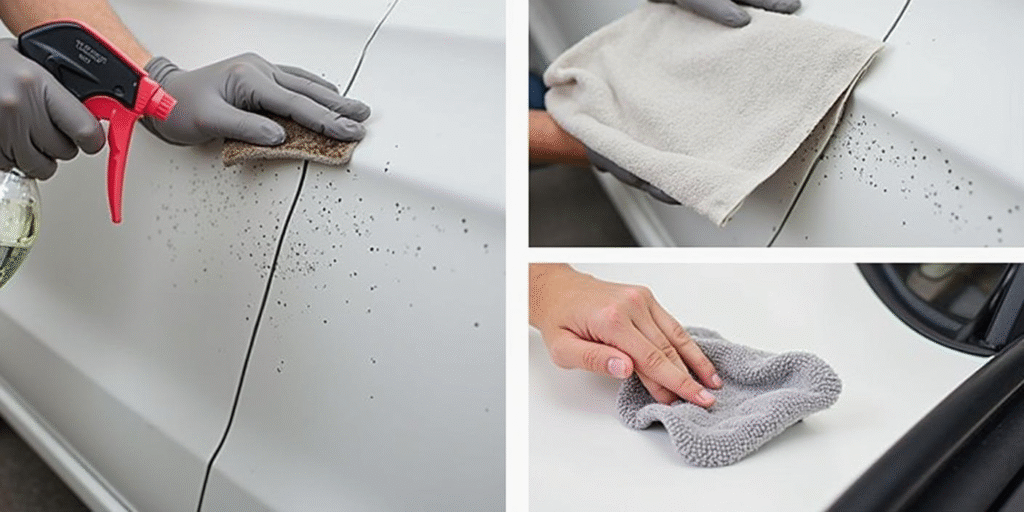
4. Paint Sealant or Ceramic Coating
Why It’s Essential
Wax provides short-term shine, but modern paint sealants and ceramic coatings offer superior durability. These products chemically bond to your paint, creating a hydrophobic barrier that repels water, UV rays, and contaminants. A well-applied coating can last months or even years, drastically reducing maintenance time.
Key Features to Look For:
- Hydrophobic Properties: Beads water to minimize spots and simplify drying.
- UV Protection: Shields paint from oxidation and fading.
- Ease of Application: User-friendly formulas that don’t require professional tools.
How to Use It:
- Prep the Surface: Wash, clay, and dry the car thoroughly.
- Apply in Sections: Use an applicator pad to spread a thin, even layer.
- Buff Off Haze: Once the product flashes (hazes), remove it with a clean microfiber towel.
- Cure Time: Avoid washing or getting the car wet for 24–48 hours.
Pro Tip:
For ceramic coatings, work in a shaded, dust-free environment. Humidity and temperature can affect curing, so check the product’s guidelines.
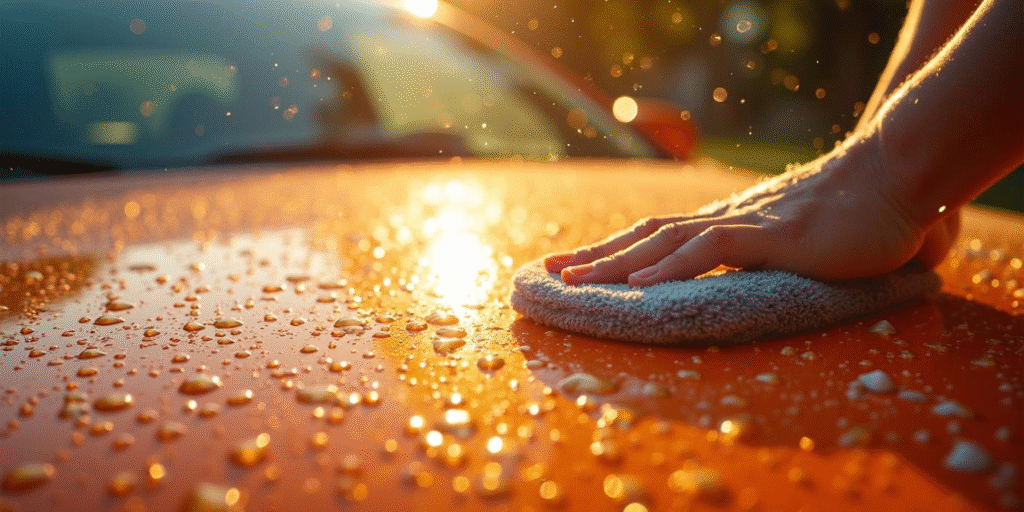
5. Interior Surface Cleaner and Protectant
Why It’s Essential
Interiors face sun damage, spills, and daily wear. A versatile cleaner and protectant combo tackles stains on upholstery, dashboards, and trim while shielding surfaces from UV rays. For leather seats, a dedicated conditioner prevents cracking and maintains suppleness.
Key Features to Look For:
- Non-Greasy Formula: Avoid shiny residues that attract dust.
- UV Inhibitors: Protects against sun-induced fading and cracking.
- pH-Balanced for Materials: Safe for leather, vinyl, plastic, and fabric.
How to Use It:
- Vacuum First: Remove loose dirt and debris.
- Spot Test: Apply cleaner to an inconspicuous area to check for discoloration.
- Clean with Microfiber: Wipe surfaces using gentle, circular motions.
- Apply Protectant: Use a separate applicator to evenly coat surfaces.
Pro Tip:
For fabric upholstery, use a fabric guard spray to repel spills and stains.
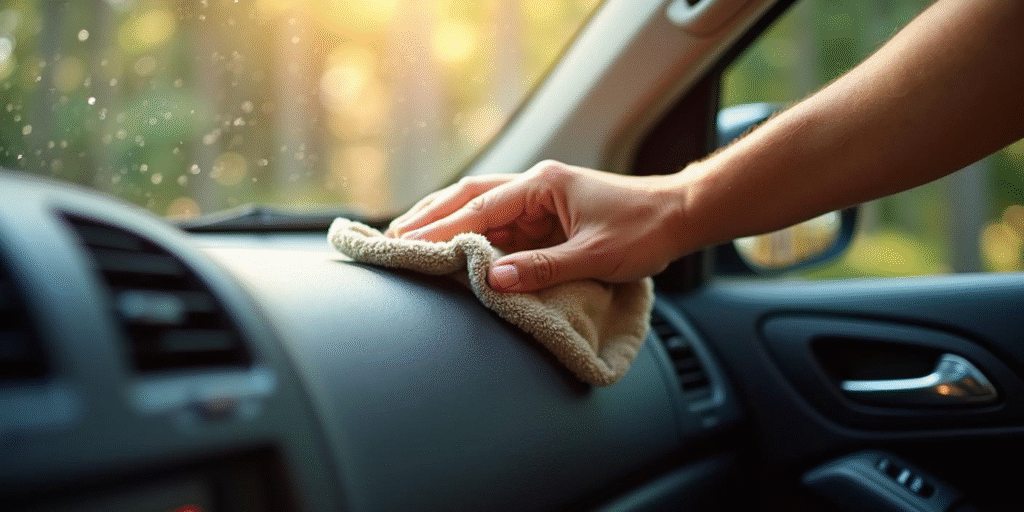
Bonus Essential: Premium Microfiber Towels
While not a “product,” microfiber towels are the unsung heroes of detailing. Their ultra-fine fibers trap dirt and absorb moisture without scratching.
Key Features to Look For:
- High GSM (Grams per Square Meter): 300–500 GSM offers plushness and durability.
- Dual-Pile Design: Longer fibers for drying, shorter ones for polishing.
- Color-Coding: Assign specific towels to wheels, paint, and interiors to avoid cross-contamination.
How to Use Them:
- Wash Before First Use: Remove manufacturing lint.
- Fold Strategically: Maximize clean sides during polishing or wax removal.
- Machine Wash Separately: Avoid fabric softeners, which reduce absorbency.
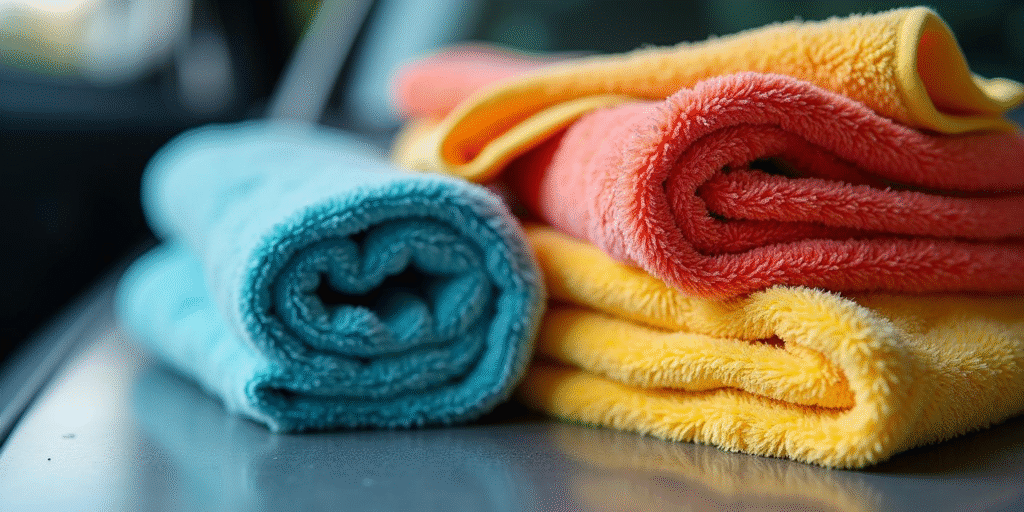
Conclusion
Detailing your car isn’t about chasing perfection—it’s about consistent care. By investing in these five foundational products, you’ll protect your vehicle’s exterior shine, extend the life of its interior, and maintain its resale value. The key is to prioritize quality tools and techniques over shortcuts. Whether you’re a weekend warrior or a daily commuter, these essentials will empower you to keep your car looking showroom-ready, one thoughtful detail at a time.
